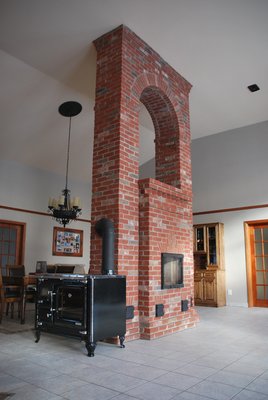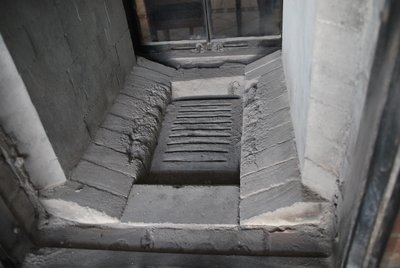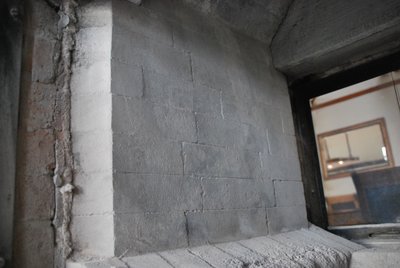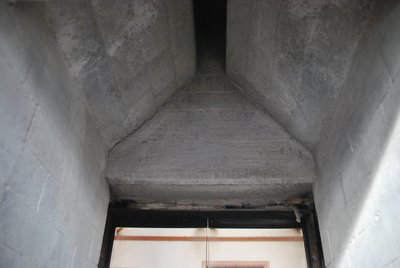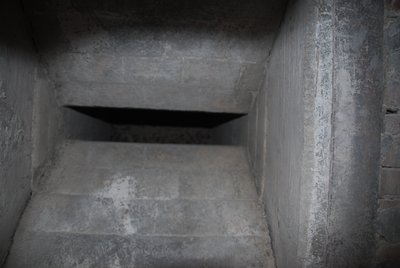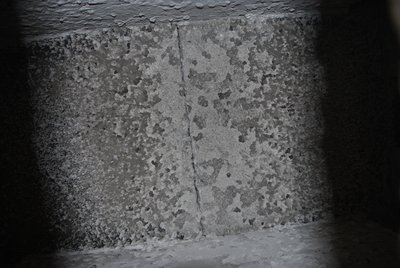Observations 16 Years Later
These images document the condition of a contra-flow masonry heater after 16 years of continuous use.
Fed with under air, the heater has a fire box loading door on both front and rear walls i.e. 'see through'
Materials:
Refractory Materials
unknown
Facing
Modern clay Brick.
Hardware
Upo
The fire box floor. Destruction is confined to the skew cut portions of the shiners that form the first course of the fire box walls. The grate is a section of a longer piece originally made to be used as a drainage grid.
The fire box walls are in perfect condition. This is typical of see through fire boxes. Having air enter from two opposing directions keeps temperatures cooler. The absence of the rear wall means there is no corner, between it, the side walls and the floor, into which the flame and gases are blown and concentrated.
The sloped fire box ceiling and 3 inch wide throat are indicative of the Finnish Takka. This design is said to use the Venturi effect to promote secondary combustion.
Both openings in the fire box are bridged by a castable refractory concrete lintel supported upon an angle iron lintel The castable lintels have both cracked at some point but not moved out of position. These lintels were made by the angle bar being placed into the mold and the castable poured upon it.
Note the perfect condition of the unshielded under side of the iron lintel and the clay brick of the arch on the facing.
Note the perfect condition of the unshielded under side of the iron lintel and the clay brick of the arch on the facing.
Marcus Flynn
2013
See also: Portfolio Heaters: St Gabriel
